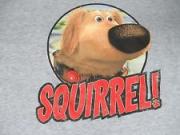I've been trying to refine my draw and have been experimenting with one that is press-out ... ish. There's a ton of posts and videos on the press-out coming from the holster - and thanks to all for the great info. I do, however, have a question about how to execute drills "from the ready" utilizing a press-out. Without getting into the ready position/position three/high compressed ready/whatever you want to call it, nomenclature debate, my current compressed ready position is at high-chest, which would require an upward motion before pressing out. In order to do a strict press-out would seem to require a face-level ready position. To folks using the press-out, what are you using for a "ready position?"



 Reply With Quote
Reply With Quote




